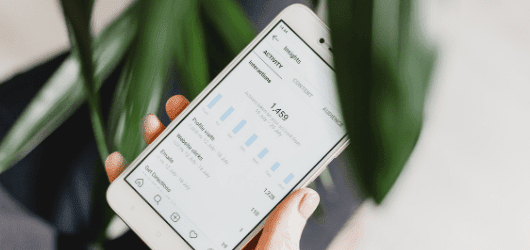
Reach vs. Impressions: The Difference and Importance of Each
When working to improve your online presence, there are various engagement metrics to evaluate. Two common metrics, especially on social media, are reach and impressions. But many struggle to understand what the difference is between reach vs. impressions.
Learn what each of these terms mean and how you can use them to assess your social media efforts.
What is the Difference Between Reach and Impressions?
To understand the difference between reach and impressions, look closer at their individual definitions. The main difference between reach and impressions is that reach only counts unique users, while impressions can include one user several times. Learn their definitions for a deeper understanding.
Reach Definition
Reach is defined as “the total number of people who have seen your ad or content” according to Hootsuite. This is the number of unique users who see your content.
Impressions Definition
Impressions is defined as “the number of times a piece of content was displayed to the target audience”. Your content could be displayed multiple times to the same users, so impressions is typically a higher number than reach. Even if a user did not click or engage with your content at all, if it was displayed to them by social media algorithms then it counts as an impression.
The Difference
The difference between reach vs. impressions then, is that impressions counts the total number of times an ad or piece of content is displayed, while reach is focused on the number of unique users who see it.
Reach vs. Impressions on Social Media
These engagement metrics are typically measured on social media to see who your posts or ads have reached. Different social media platforms measure reach and impressions differently, however.
Facebook defines reach as “the number of people who saw your ads at least once” and impressions as “the number of times your ads were on screen”. They break down both reach and impressions by organic, paid, and viral qualifiers.
Organic reach is the number of people who saw your content or ad for free on their timeline. Paid reach is the number of people who saw your ad in a paid ad space promoted on their timeline. Viral reach is the number of people who saw your content because it was shared by someone else or because a friend engaged with it. The same applies to impressions.
Breaking down reach and impressions by organic, paid, and viral content gives a better idea about how users are seeing and engaging with your content.
Instagram, owned by Facebook, uses the same method for tracking reach vs. impressions.
Twitter does not measure reach, and only reports on impressions as any time a user sees your tweet. They also measure engagements, which includes anytime someone likes, retweets, replies to, clicks a link, or expands your tweet.
Which Should You Track?
Now that you understand the difference between impressions and reach, you may be wondering which is more useful to track. The answer depends on your goals.
Impressions are useful to know how many times your ad or content has been served. This tells you whether it’s appearing for users. Too few impressions may mean that your ad targeting is too specific and you may need to adjust. Too many impressions may mean that your ad is being served too many times, and could be spamming users.
Reach is useful for seeing how many people actually saw your content. This can help you see which types of content reaches a larger audience and performs better. Reach may also show that your ads or general content are ineffective; if you’ve reached 1000 users but no one has clicked through to buy your products or read your blog post, you may need to consider your targeting and the copy used.
It’s easy to track both, so keep an eye on both metrics to get the full picture of your social media visibility. Looking at both reach and impressions helps you understand how many people saw your content as well as how many times it was displayed. For example, if you had 1000 impressions but a reach of only 200 users, something may be wrong with your ad targeting, as the same users have seen an ad 5 times each.
Final Thoughts
Use reach and impressions to gain a greater understanding of how your social media posts and ads are performing. These metrics help show your visibility online, which is vital for increasing brand awareness. Track these along with other metrics like engagement and conversions to fully comprehend the effectiveness of your online efforts!


Sorry, the comment form is closed at this time.